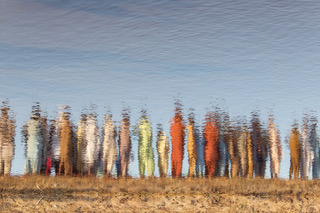Displacement must be central to addressing climate change-related loss and damage. Climate-related displacement undermines human rights, well-being and development, resulting in a broad range of adverse impacts on individuals, communities, societies and States, raising important questions and concerns regarding climate justice. Any comprehensive approach to addressing climate-related loss and damage must endeavour to avert, minimise and provide equitable and just solutions to the adverse impacts of displacement.
The messages in this advocacy brief by the Loss and Damage and Challenges of Human Mobility and Displacement Working Group are intended to inform and catalyse discussions and debates leading up to COP 28 and beyond, engaging States and regional bodies, governmental organisations, NGOs, community-based organisations, policy makers, researchers, legal experts and others in positions to avert, minimise and address displacement and mobility-related loss and damage in the context of climate change.
KEYWORDS: loss and damage; climate change; COP 28; displacement; climate justice
This advocacy brief is co-published by the Loss and Damage Collaboration and Researching Internal Displacement. It can be found also on the Loss and Damage Collaboration webpage.


The Loss and Damage and the Challenges of Human Mobility and Displacement working group is a coalition of practitioners, researchers, lawyers and activists working on human mobility at local, national and global levels. Representing a broad cross-section of voices, perspectives and interests, participants in the working group share the common conviction that climate change-related displacement must be central to efforts to assess and address loss and damage impacts, including cascading and intergenerational impacts on individuals, communities, societies and ecosystems.
Image Credits
1. Cover image: Drowning in Despair, by Jamil Akhtar via the World Meteorological Organization (7289), licensed under CC BY-NC-SA 2.0. Description: Residents of a village in District Sanghar in Sindh Province of Pakistan, gather to collect some emergency ration supplies after the devastating flood of 2022. This year has also had its share of floods, albeit slightly less than the previous year. Experts warn that this will probably become an annual occurrence. Pakistan has one of the smallest carbon footprints in the world while suffering from the worst effects of climate change and almost no disaster preparedness.
2. Loss and Damage Collaboration logo: Sundarbans web, by the European Space Agency, Contains modified Copernicus Sentinel data (2016), processed by ESA, licensed under CC BY-SA 3.0 IGO

